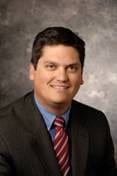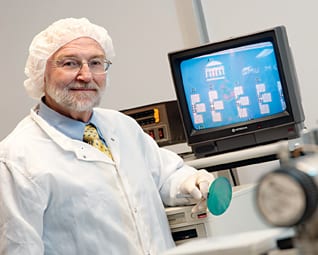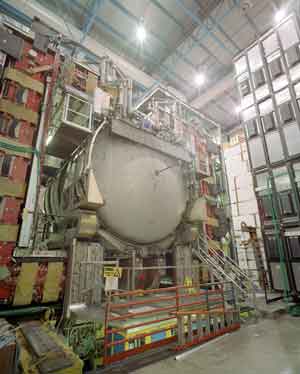 |
| Gary Evans |
SMU Professor of Electrical Engineering Gary Evans recently received some good news: Journal reviewers said they thought his proposal for solving one of the most perplexing problems in the emerging field of integrated photonics sounded impossible.
“To me, that’s extremely promising when the reviewers don’t think it’s possible,” Evans said. “When that’s happened, it’s been fun showing the reviewers that the conventional wisdom is incorrect.”
Photonics is the science of processing or transmitting information using light. Fiber-optic systems — perhaps the field’s best known application — transform telephone conversations into laser-generated signals that travel through thin glass wires to machines that decode the signals at the other end.
A photon is a light quantum, the smallest measurable unit of light. Integrated photonics researchers seek to create circuits that use photons to do what electrons do in electric integrated semiconductor circuits.
Evans and Jerome Butler, university distinguished professor of electrical engineering, think they have hit on a solution to the problem of integrating an optical isolator with other components in a photonic circuit. In electric semiconductor circuits, diodes act as isolators by letting electrons flow in only one direction.
“Isolation is crucial when you put about 1 billion devices on a single chip of silicon,” Evans says. The two researchers want to integrate an optical isolator with a tiny semiconductor laser that would let light travel in one direction within a photonic semiconductor circuit and keep it from reflecting back into the laser, where it could create instabilities in the laser’s output.
It is understandable that their peers might be skeptical, Evans says. Researchers around the world have been trying to create integrated photonic isolators since the 1970s and no one has overcome the problem of reflection in photonic circuits.
Evans had a similar experience when he worked with lasers at RCA Labs in Princeton, N.J., before joining SMU. In 1984 all semiconductor lasers were edge-emitting, meaning they generated light from the edge of the chip rather than the surface. Evans and his team proposed a surface-emitting laser to the U.S. Air Force.
“Their reviewers said we could never get light out, much less create a laser,” he recalls, adding that his team wrote a proposal and nevertheless received funding from the Air Force starting in 1985.
In only seven years, Evans’ group got light out of the system and demonstrated surface-emitting lasers with performance efficiencies as good as edge-emitting lasers. When he came to SMU in 1992, the Air Force continued to fund Evans’ work, which resulted in a spin-off company, Photodigm in Richardson, Texas.
Photodigm conducts research for the government and manufactures a range of lasers, most of them edge-emitting lasers that have been improved using processes developed for surface-emitting ones, says Evans. He is Photodigm’s co-founder, vice president and chief technology officer. Another co-founder is Jay Kirk, the Electrical Engineering Department’s lab manager and Evan’s former colleague at RCA. Electrical Engineering Chair and Associate Professor Marc P. Christensen is on the company’s technical advisory board, as is Butler, who worked closely with Evans when he was at RCA and helped lure him to SMU.
Evans has since expanded into medical photonics, working with SMU and Drexel University colleagues on a photodynamic therapy system to treat cancer of the esophagus.
 |
| Marc Christensen |
Similar laser-based systems are used commercially, but they are large and water-cooled. The team hopes to create a machine that’s portable and cheap enough for use in every doctor’s office. Their design uses arrays of semiconductor lasers, each no bigger than a grain of sand, inserted into the esophagus via a balloon catheter. The patient is given a photosensitive drug that kills cancer cells during a chemical reaction triggered by the lasers.
Christensen says SMU’s photonics researchers — who include faculty members in electrical engineering, mathematics and physics, plus their graduate students — come together periodically for interdisciplinary meetings because so many fields are involved in creating and understanding photonic devices.
Christensen’s Photonic Architectures Laboratory has received more than $2 million in grants from the Defense Advanced Research Projects Agency, DARPA, for a project to make unmanned aerial vehicles, UAVs, stealthier.
“Today we think of a Predator UAV as flying at 30,000 feet carrying a really nice camera with a long lens that can zoom into an area on the ground and look at it very carefully,” Christensen says. Ideally, the device would be tiny with a flat lens, like a cell phone camera; however, those cameras do not produce images of adequate resolution.
Christensen’s interdisciplinary team has devised a multi-step solution that starts with an array of hundreds of tiny, flat, square cameras and equally tiny, square mirrors placed in a grid pattern that can be mounted on the underside of an aircraft as small as a model airplane. Each camera will provide slightly different information about the subject because each takes a photograph from a slightly different angle.
Computational imaging is then used to combine the numerous low-resolution images to create a sharper image that is akin to one taken by a high-performance camera too heavy to fit on the small aircraft.

|

|
Computational imaging: Each hexagonal
face is a micro-mirror, individually
positioned to create an overall shape. |
“Wouldn’t it be great if the camera could determine from its wide shot which objects in the field are most important and be able to zero in on them?” Christensen asks.
Such a camera is under development at SMU. Called an adaptive resolution camera, it would analyze the wide view and use mathematical formulas to identify objects of interest — such as aircraft on the ground.
Instead of simple mirrors, the adaptive resolution camera uses an array of micro-electric machines, called MEMs. Each MEM looks like a mirror that is hundreds of microns across, or about the width of a few human hairs, attached to three even smaller levers. The levers would reposition the mirrors in the desired direction to improve the information collected by the camera’s next photographs to create another, better image — all faster than the blink of an eye.
The smarter camera would automatically put more pixels in the areas of interest and less in those considered unimportant, he says, adding that the resulting picture may look strange by conventional standards, but it would provide more useful information.
The team from the Department of Electrical Engineering in the SMU Bobby B. Lyle School of Engineering incorporates skills from physics, mathematics and computer science. Assistant Professor Dinesh Rajan, a specialist in information theory, finds the mathematical route to the best final image, a so-called “goodness value.” Associate Professor Scott Douglas, an adaptive algorithms expert, crafts the formulas to make the system home in on the important details within the big picture. And Professor Panos Papamichalis works on their robustness, making the system more tolerant of the adversities the camera will encounter in daily use.
Integrated circuits make the thousands of necessary computations, and “given the need for miniaturization, the best way to reduce the size of those circuits would make them fully photonic,” Christensen says. That step, however, is some time off. For semiconductor laser structures, Christensen works with Evans.
The two have just started a project, also for DARPA, in collaboration with the University of Texas at Dallas, Photodigm, Raytheon and Northrop Grumman. The goal: to develop signal processing with photons, instead of electrons; in other words, computing with light.
To achieve this they must create the photonic equivalent of a semiconductor chip. Most computer chips are made with silicon, which doesn’t emit light very well. A better choice is indium (In) phosphide (P), called a III-V semiconductor, Christensen says. The goal is to emit and control light, one photon at a time.
“At the quantum level you are literally controlling individual photons and providing gain (to amplify signals),” says Christensen. He compares the current state of photonic integrated circuits with the world’s first electronic integrated circuit, invented at Texas Instruments 50 years ago this summer by the late Jack Kilby when he linked a handful of transistors on a single silicon chip. Over the next 50 years, semiconductors evolved from a handful of components on that first chip to hundreds of millions of components on a single chip, he says.
“If you look at the state of photonics processing, it’s about 6 to 15 components,” he says. “It’s like we’re starting today where Jack Kilby was 50 years ago, and it will be interesting to see where a few decades takes the field of integrated photonics.” — Deborah Wormser
Related links:
Gary Evans
Jerome Butler
Dinesh Rajan
Scott Douglas
Panos Papamichalis
Marc Christensen
SMU’s Electrical Engineering research
Department of Electrical Engineering
The Daily Campus: Shade Tree Engineering
Photodigm
Bobby B. Lyle School of Engineering





